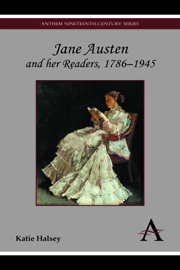3 - Jane Austen's Games of Ingenuity
from Part One
Published online by Cambridge University Press: 05 July 2012
Summary
In The Proper Lady and the Woman Writer, Mary Poovey argues that Jane Austen ‘assumed that a novel could simultaneously gratify the cravings of the imagination and provide moral instruction’, and that ‘she thus manages to satisfy both the individual reader's desire for emotional gratification and the program of education prescribed by traditional moral aestheticians’. Chapter 1 outlines the ‘program of education prescribed by traditional moral aestheticians’, with particular reference to its directives about female reading and their relationship to the status of the novel. Poovey's central assumption that Austen's novels find a way to combine pleasure and instruction is certainly correct (although I do not believe they do so entirely to the service of the ‘domestic ideology’, as Poovey suggests), as is her belief that ‘at their most sophisticated, Austen's rhetorical strategies harness the imaginative energy of her readers to a moral design’. However, in the light of the material considered in Chapters 1 and 2, Poovey's suggestion that Austen could ‘assume’ that a novel could provide moral instruction is surprising, particularly when set in the context of the reputation of the female-authored novel in Austen's period.
The evidence suggests that Austen's society ‘assumed’ rather the opposite from the position outlined by Poovey: that whatever potential for good the novel might have, in practice it was more likely to cause harm.
- Type
- Chapter
- Information
- Jane Austen and her Readers, 1786–1945 , pp. 57 - 86Publisher: Anthem PressPrint publication year: 2012



